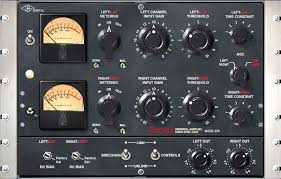A donation of a nice 1960 Ferguson Radiogram got me thinking about the re-immerging of analogue recording techniques, vinyl records etc. Having got the set working to an “out the shop” condition, everyone who had walked in and heard it playing away in the background has commented “oh that sounds nice”. Sure it does too. Not the most HiFi, but good on the ear, warm and comforting!
In the early ‘80s, CDs and digital recording started to take over from the old vinyl albums and studio tape mastering machines. All good stuff, but there has always been a hard-core school of thought that says the resulting sound is not as nice to listen to. To record and process the raw analogue musical signal to make a CD, it first has to be chopped up and made into electrical 1s and 0s, similar data format used by emails, phone calls etc. The analogue signal is incredibly complex and has to be chopped into very fine pieces in order for the complexity to be reproduced by your CD player and to sound half decent. The human ear and brain are very sensitive to tone and dynamic range (loud and soft). You have the ability to hear a quiet pin drop, all the way up to 5 Spaniards playing dominoes. There is a varying degree of loss of detail in the conversion of the signal into a digital format (quantisation loss). Purists say that it is noticeable. I agree. Try listening to an original recording of a piece of music, then the MP3 version. MP3 format has an even higher degree of loss of detail of all the audio formats.
In order to try and create this wide dynamic range when recording a band for example, so it sounds like the real thing on playback, the audio needs to be processed. Recording systems and your own HiFi struggles to give the dynamic bandwidth the human hear wants. The signal needs to be compressed before recording (sort of squeezing it all onto the master tape) and expanded to its original upon playback. This tricks the ear and brain into imaging a full spectrum of sound. Equipment to do this has been around since the ‘40s. Sun Studios, King Records, Abbey Road studios, Beatles recordings, all were subject to this process. Recording engineers used pieces of gear such as a Fairchild 670 variable Mu compressor and expander. A big lump, 14 transformers, 20+ valves etc. It gave the sound people wanted. Getting all this onto a vinyl record takes skill, the grove width, depth, spacing is determined by how loud and quiet you want to go and, how much bass is present. Basically, the louder you go, the fatter the grove and this reduces how long the record can play for.
As computers developed, the signal processing could be managed and synthesised using digital techniques. Easier to use, cheaper and more flexible. However, the same problem exists, where errors that are introduced during the analogue to digital conversion. Many recording artists are now demanding that recordings are made using the older analogue systems. Companies are building transistor and valve compressors and expanders, based on 50 year old designs. I mentioned the Fairchild box. If you can find one, you’ll pay over £20,000 for it! Also, there are companies buying up mothballed vinyl record presses, producing LPs again. Not huge quantities, but on the up. There is something fascinating about placing a record on a turntable and dropping a stylus into the groove.
I see a lot of the new “retro” equipment coming in for repair. Valve equipment that has been subject to modern day manufacturing techniques. Some of the companies have no idea about the practical issues. Valves get hot for one thing. Circuit boards are inadequate along with under rated components. Modern surface mount technology is fine, where heat isn’t a problem. However, in the valve environment, components need to be soldered with their wires through a circuit board rather than simply soldered to the surface. I could go on and on. Valve guitar amps are a prime example. Many will not stand the test of time due to the way they are built. Bottom end Fenders, Laneys and Marshalls all suffer with a “Chinese build”. Some companies however are producing really good gear adopting principles that their Granddad’s would have used! Funny how things come around.




